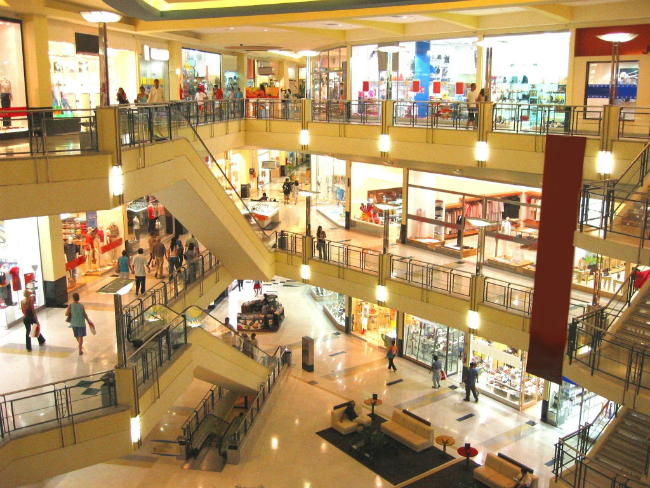
The Retail Business Technology Expo 2016 closed last week after another successful show. Over the two days of the show, retail industry leaders and suppliers debated the future of the industry and how best to tackle their most challenging issues.

One of the highlights of the show was the panel discussion that focused on retail innovation with industry captains including former BRC chairman, Stephen Robertson, and Executive Vice President of the Boots Walgreens Alliance, Simon Roberts, amongst others. But the Q&A showed a surprising lack of awareness of how other retailers and industries are benefitting from biometrics.
The challenges of "managing retail innovation, becoming customer-centric and the role of digital" were debated amongst the panel, with an emergent theme of omnichannel 'bricks and clicks' retailing presenting the most value for retail organisations. More opportunities to use customer service, create value and grow profit to create competitive advantage exist when combined with in-store experience than through retailing only in the highly-competitive, digital space.
With managers and senior leaders across the retail world increasingly relying on data to drive key business decisions, there comes a significant challenge with store-only based strategies: the first time a customer identifies themselves in-store is often at the checkout.
The Customer Journey
Online retailing presents opportunities to identify, understand and engage customers as they 'walk through the (virtual) door' with all manner of data, measurements and analytics providing us with information that shapes how we generate online sales. The digital customer journey is mapped precisely and we can now identify patterns before they become trends. We know when someone accesses our website, we know what they do when they're there and we know when they drop-off and when they purchase. Such insights are precious views into how customers perceive our brands, products and the shopping experience.
Back in-store however, what do we know about our footfall? We have a rough idea of numbers coming into stores and we can deduce some data from the back-office systems that power our EPOS. What's missing from our in-store data, however, is the breadth of measurements and precision of data. Without counting visitors in to stores, closely monitoring their movements and what they put into their baskets, this information is scarce. Short of conducting exit surveys at the door with every customer, the data we get in-store doesn't give us even a snippet of the information we get from our online customers and we simply don't have the means to collect meaningful or, for that matter, precise data. This creates what was agreed as the biggest challenge facing retailers today: How to translate the 'Segment of One' personalised web shopping experience into the physical world? As said earlier, often the first interaction we have with our customers is at the checkout and by this time it is often too late to alter behaviours.
The importance of seamless omni-channel interaction was evident in the show theme at RBTE. Enabling customers to switch between engagement mechanisms (such as online self-service, call centre assisted, mobile and in-store) and their associated media types (electronic or physical), all as part of a single logical purchase or service process, is essential. For most, customer journeys can be frustrating and full of repetition, unwanted and time-consuming identity provision and with retailers showing a lack of understanding of the breadth of current customer interactions and needs. It is clear that efforts to create coherent, data-driven customer journeys across digital and physical retail spaces are required in order to gain significant momentum in retail business growth. But how?
For us, customer biometrics hold the key to revolutionising the way we engage with consumers.
What are 'biometrics'?
Put simply, biometrics is the measurement and analysis of physical or behavioural traits and characteristics. They are aspects of what we are, rather than what we carry around or remember for identity purposes. Technology in this area has rapidly developed over the last decade and, whilst many people immediately associate biometrics with security, the opportunity to deploy this technology across commerce - particularly retail - is huge.
Use of our biometric data could enable businesses to add capabilities at the cornerstone of convenient identity provision; the development of biometric approaches to transforming the customer journey will provide technologies with which we can both measure our individual customers across entire retail estates, both on and offline (think Tom Cruise and 'Minority Report'), and delivery a better customer experience.
If the panel at the 'Innovation in Retail' seminar is a representative sample of our retail business leaders, then it would appear that many senior executives in the UK industry are unaware of the potential of biometrics, despite the competitive advances being made by innovators all over Europe as well as a few sector leaders in Britain.
Icon UK sees a future with multi-modal biometrics at the core of personalised service, driven by customer choice, changeable at a whim and delivered in a way that is secure and sits within an appropriate business context. They can integrate seamlessly with omni-channel content distribution and feedback systems providing real-time intelligence sufficient to alter buying behaviours in every channel.
Using Biometrics in Retail
An example of biometric use might include a customer journey which starts online, continues with identification on entry to stores, enables rapid purchase and signs up post-sale services. Once the customer enters a store, they may be identified on a voluntary basis by their smartphones or even facial recognition in return for individually tailored offers of value or queue-busting. This is known to often encourage additional unscheduled in store purchases as part of a feel-good enhanced experience. And when the consumer wants to commit to something non-trivial (financial, medical, larger value, etc.), they might use a handwritten signature with a stylus on any number of electronic devices to not only legally approve the agreement but also have their identity confirmed in real-time by automated software that detects their unique rhythm and pressure in seconds.
In this, automated systems can recognise the number or frequency of visits the customer made to stores or the website, what products they bought, the marketing materials (such as email and social campaigns) they have viewed and interacted with and much more. Tailored promotions, product suggestions and faster service could be offered to customers whilst staff receive notifications that will help them to approach and assist shoppers in ways that could provide up- and cross-selling opportunities that, previously, have not existed in stores.
Most of the technology to do this is available today and innovators are utilising this. First Direct Bank are introducing voice recognition, Tesco's One Stop have installed smartphone iBeacons and Carphone Warehouse are benefitting from biometric signatures with faster on-boarding, service and reduced fraud. As was pointed out by panellist Dharmash Mistry (co-founder and CEO of Blow), "disruptive Innovation needs to be shown to customers in order for them to understand it". If they like it - or better, love it - then competitive differentiation is achieved.
Take this across the spectrum of channels and you could see responses to mass marketing materials triggering calls to contact centres where voice biometrics (which automatically recognise individuals from natural speech) could identify unique customers quickly, allowing them to place orders without repetitively providing details already held against their profile, such as their home address, local store or perhaps even their payment method.
Such biometrics are more secure than current alternatives when correctly implemented - and can be used in-store or online, transactionally or subsequently, for additional service provision. The best ones like voice and biometric signatures dynamically map individuals uniquely to their known variable patterns, rather than using static measures (like a fingerprint or signature image) or the fast-disappearing password and pin. They also do this in the background, with the customer informed but not interrupted.
Using Data from Biometrics to Gain Advantage and Support Change
All of a sudden, we're collecting a constant stream of data on our customers from a range of authoritative and reliable omni-channel sources. Importantly, it's data we can analyse, manipulate and use to gain advantage over competitors. True omni-channel retailing relies on not only only knowing our target customers, but knowing who it is that actually spend money with us in order to provide personalised and memorable shopping experiences that encourage repeat business and - crucially - brand advocacy.
With true customisation and customer value being a 'hot topic' for retailers, this personalised approach to customer loyalty and recognition will revolutionise the way we shop. Biometrics embedded in omni-channel experiences, with customers able to reveal their identity through multiple methods, is the next logical step in developing retail for the future. The benefits will attract consumers to participate in a fair exchange (their information for enhanced, personalised value) and every customer will receive their own very personal experience, continually enhanced as their data profile is built.
We will say goodbye to generic customer journeys and the winners in this race will enable a common brand identity to be promoted in an appropriate manner, correctly formatted for the channel in question, firstly for the customer's perspective and then their own.
Behind the scenes, a total overhaul may be required. In the race, many retailers will fail - unable to change their processes, technology or both. A lot of consolidation is expected and, for some retailers, their core asset value will be driven in the future not only from their store assets but more from their systems of customer understanding, recognition and engagement.
Author: Chris Jones is CEO of Icon UK, a specialist in Document and Identity Management solutions. Whilst these are his personal views, the article also mentions Icon UK technologies among others by means of reference.
Panel members:
Simon Roberts, President of Boots & Executive VP of Walgreens Boots Alliance;
Luke Jensen, former Sainsburys Group Development & Strategy Director;
Richard Woolf, Javelin Group COO (UK omni-channel consultancy, now sold to Accenture);
Dharmash Mistry, CEO/Co-Founder Blow (Beauty to you; ex-Balderton Capital Private Equity board).
Moderator: Stephen Robertson (former Marketing Director B&Q & former Director General, British Retail Consortium)
Further Information:
Biometrics Institute: www.biometricsinstitute.org
Signature Biometrics: www.icon-uk.net/signature_biometrics
| 

 Connect with us on Linkedin
Connect with us on Linkedin 


 Connect with us on Linkedin
Connect with us on Linkedin 

![]()
![]()
![]()